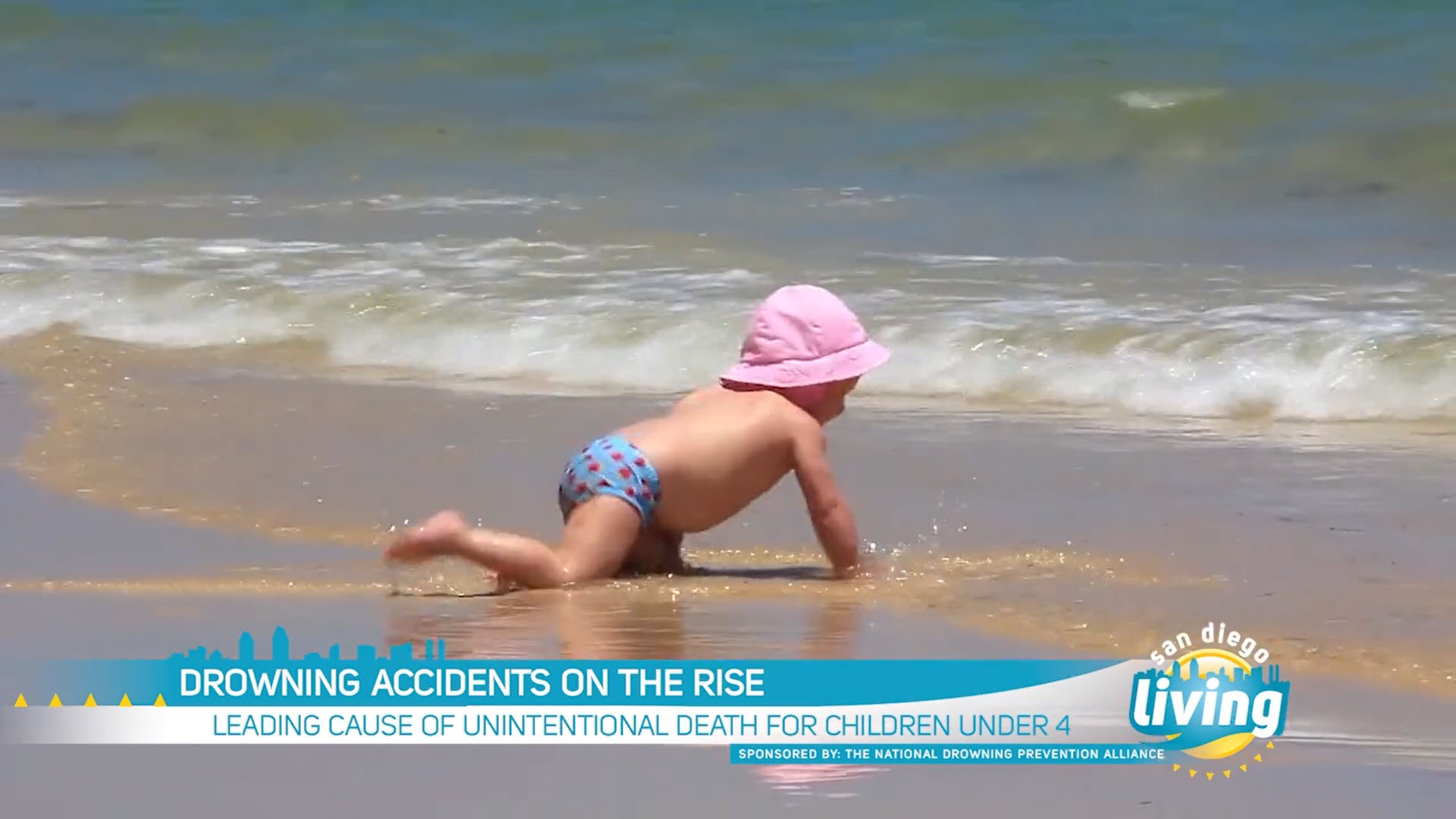SAN DIEGO — Did you know that drowning is the leading cause of unintentional death for children age 1-4? It’s also the second leading cause of death for kids under 14.
As the busiest water activity season is upon us, and with childhood drowning accidents on the rise, Adam Katchmarchi, Executive Director of the National Drowning Prevention Alliance, joins our Laura Cavanaugh to offer parents critical safety tips they need to keep their kids safe this summer.
Anywhere there is water there is a risk of drowning. Nearly 70% of childhood drownings actually happen during non-swim times. So parents and families must be vigilant at all times.
“We are losing 900 kids under the age of 18 every year,” said Katchmarchi. “The problem gets even worse when we talk about non-fatal drowning. The CDC reports for every one fatal childhood drowning, we’re seeing another seven or eight in our emergency departments.”
Drowning can happen in as little as 30 seconds. It is fast, silent, but preventable. By learning and using the following five layers of protection, you can significantly reduce the risk of drowning.
No single prevention strategy is enough. But when used together, the five layers of protection are powerful.
- Restrict Access to Water – by using fencing, barriers and alarms
- Capable Adult Supervision – designate a water watcher, be in the water with your kids
- Water Competency – Children can start swim lessons as early as their first birthday
- Properly-Fitted Life jackets – on boat, around natural bodies of water
- Emergency Preparation – know what to do in an emergency, CPR with rescue breaths, basic water rescue skills
To prepare kids for a safer summer at the beach, make sure to swim near a lifeguard. Rip currents are the cause of more than 80% of the rescues that lifeguards perform on beaches each year. Before heading to the beach, check your local beach conditions. When waves are two to three feet or higher, you may likely experience strong rip currents.
Water safety is a lifelong endeavor. And it only takes a few minutes to learn these 5 layers of protection to help save a life.
Learn how to keep your family safer at www.ndpa.org
Sponsored by: National Drowning Prevention Alliance

